A pair of folding tables, painted in the style of existing late medieval tables from Germany.
We needed better tables for eating our medieval feasts. Friends of ours, Leonie and Damian, had made a lovely painted set, based on the extant tables in the Cluny Museum in Paris. We admired them and thought to make our own. Then I found an earlier table in Neubecker’s Heraldry (1997) with similar decoration. After we visited the Cluny and saw the original table ourselves, we were even more enthused.
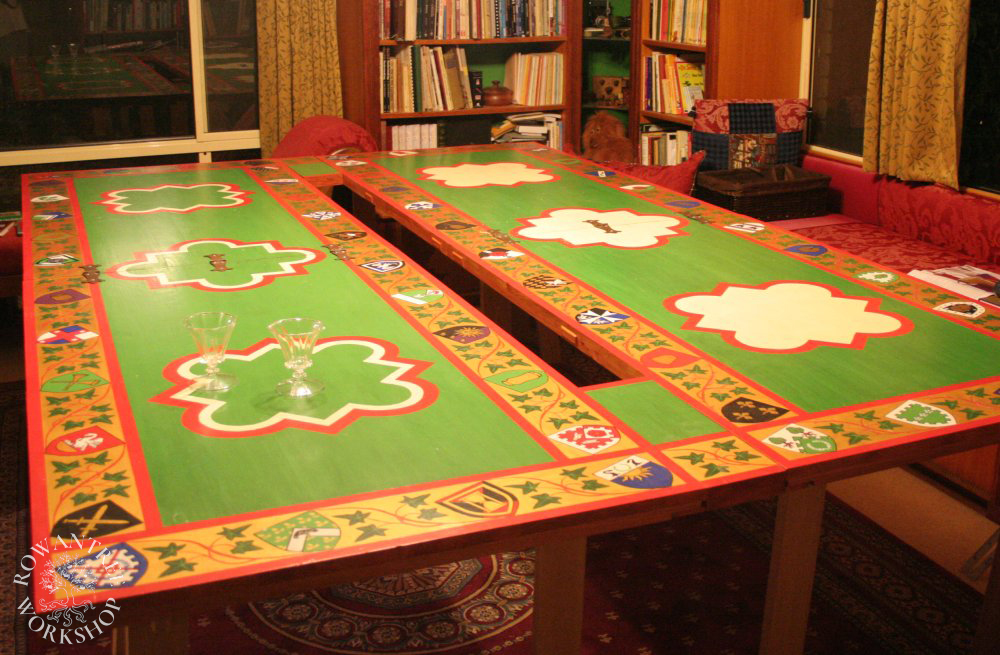
Research and Design
The simplest – and most common – tables in the middle ages were trestle tables. In Medieval and Renaissance Interiors, Oldezka (2016) notes that this form probably originated in Spain, noting that in England they were called ‘Spanish Tables’ and Italian inventories described the trestles as legs ‘alla Spagnola.
Painted tables are known from Roman times and are described in many contemporary writings from the middle ages. In his article on Painted Tabletops of the late Middle Ages, Kremb (2016) states that there are 23 tables with painted tabletops north of the Rhine that are preserved and/or identifiable in written sources.
The main inspiration for our piece came from the wooden folding table in the Cluny museum (CI.7725), which was made in northern Germany c1420. It is 76cm wide by 455cm long and 4.2cm thick and folds up – both ends to the middle. The hinges are unusual – articulated along the sides, rather than embedded into the tabletop.
It is made of oak, painted green with a border in gold and red, and ornamented with heraldic devices, linked with red vines and green oak leaves. The centre section has four barbed quatrefoils with biblical images, and shields with mantled helms. The table would have been supported on trestles, but these have not been preserved.
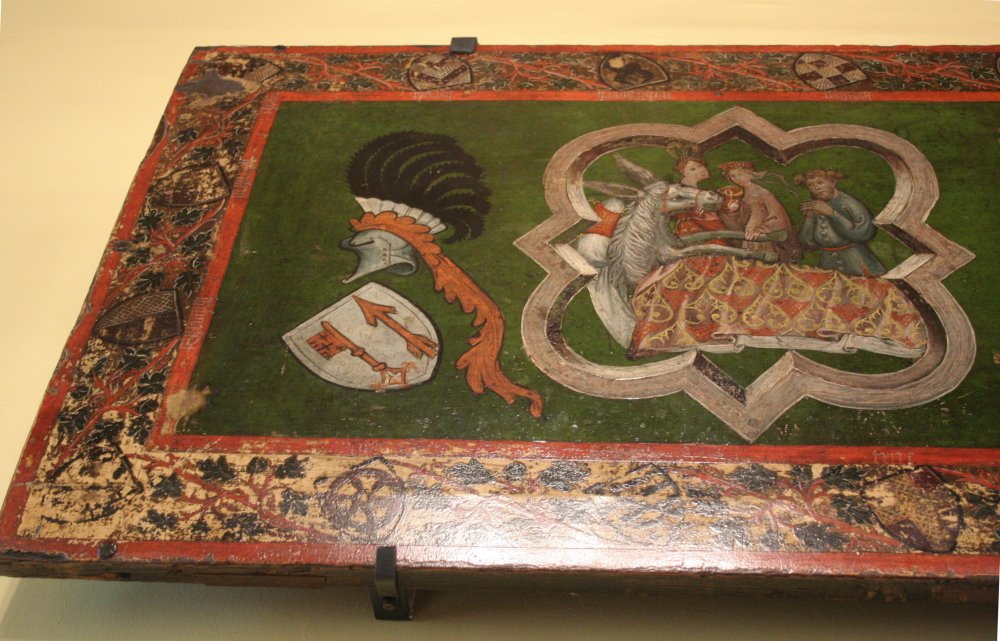
(Photo: Robyn Spencer)
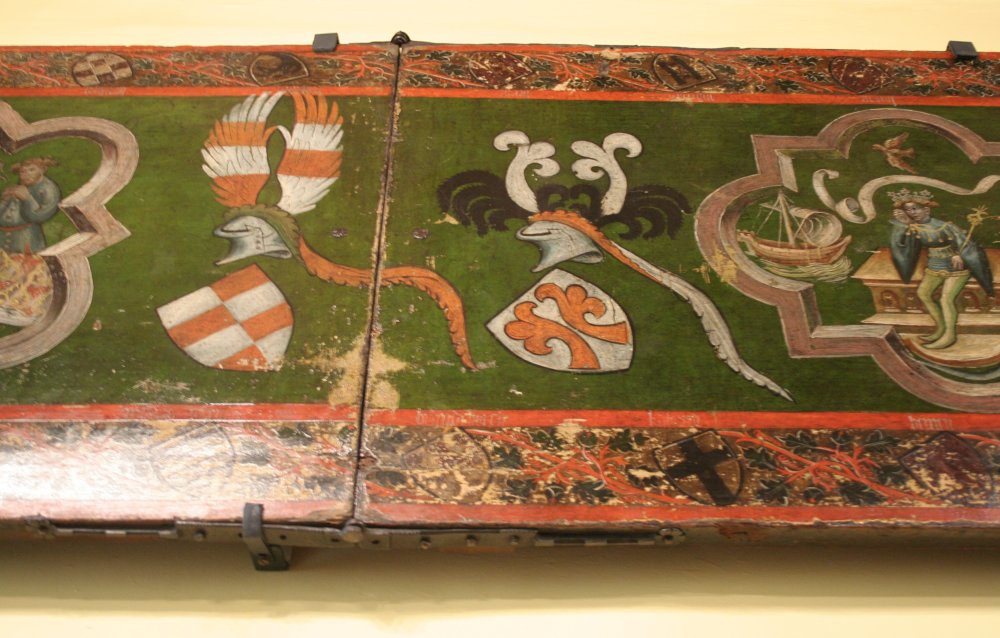
(Photo: Robyn Spencer)
The second related table also comes from Germany – the oldest known German table, c1330. It was looted to the Lüneburg Town Hall in 1440, and is now in the Lüneburg museum. According to the Informationsblatt Objekte, it is 80cm wide by 660cm long and 4cm thick, and also fold up ends to middle. It has 3 butterfly hinges set into the face of the table at each hinged section.
Like the Cluny table, it is made of oak, painted green with a border in gold and red, depicting heraldic devices alternating with mantled helms. The centre section has five rondels with Biblical images, but no other decoration. The central section of this table is supported on an extant solid oak frame, with the two hinged sections supported on trestles (not preserved).

Construction
Both extant tables fold ends to middle, but I wanted our tables to be used in several conformations: as one long table, two tables and a single rectangular table within a tent. So we built two hinged tables.
We needed the tables to be light and portable, so my husband made them from pine rather than oak. Each table is 83cm wide by 280cm long, hinged in the middle,with three hinges.
The top boards were made from standard hardware store stock, 18mm thick, with extra planking at the edges to bring them to 35mm.
In line with the extant examples, I painted the tables green, with gold and red borders, using a combination of acrylic house paint and craft paints. I used masking tape to get nice sharp lines, and built the paint up in layers.
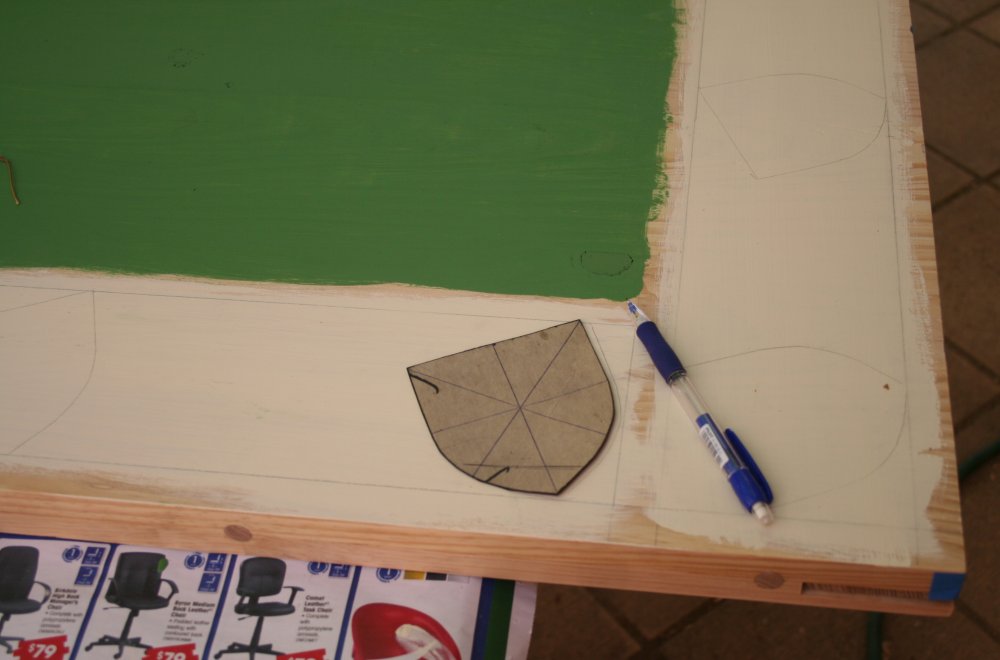

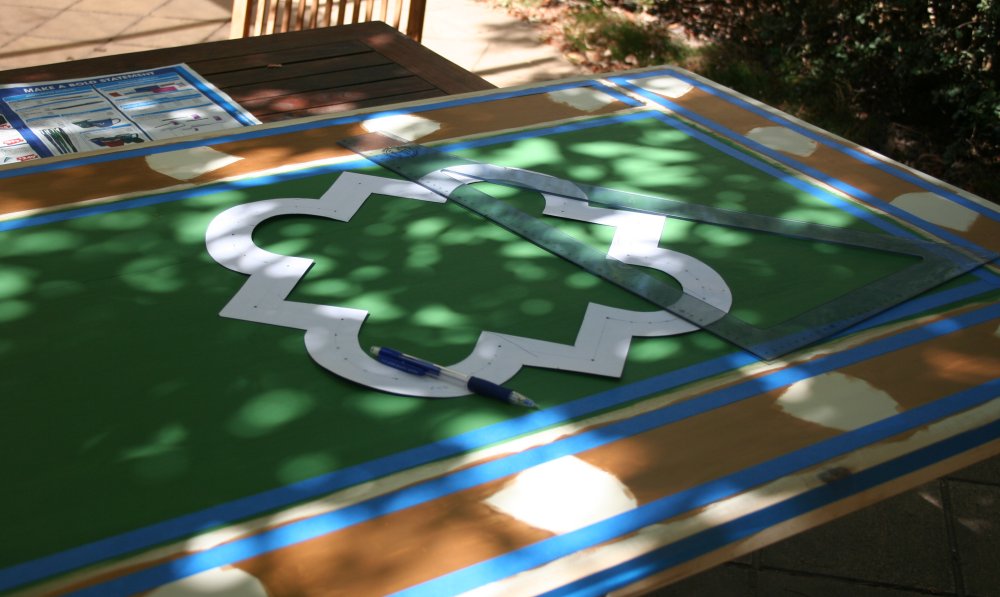
They are decorated with heraldic devices linked with red vines and green ivy leaves. I made templates for the shields – a fast way to get a uniform result – then painted the shields with the heraldic devices of our household and friends. I also made a template for the leaves, the put the vines in freehand.
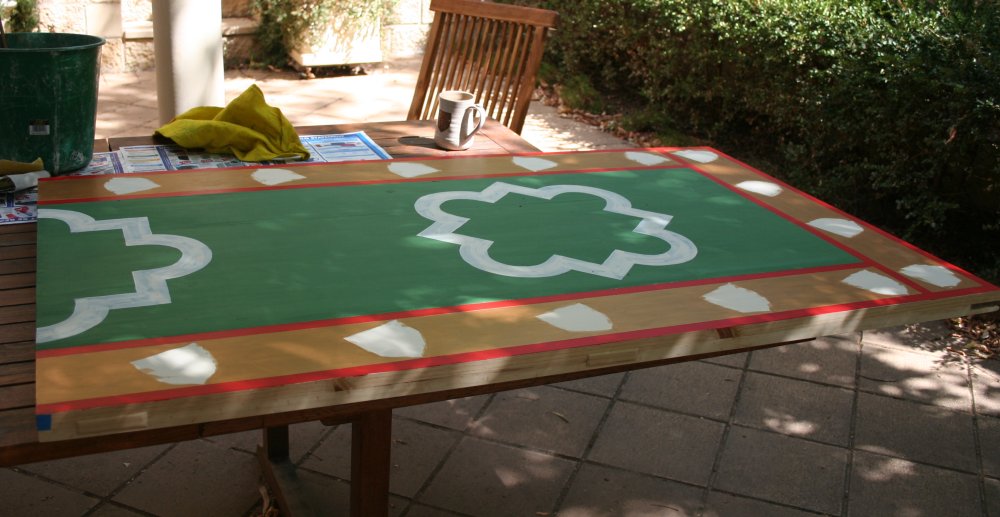

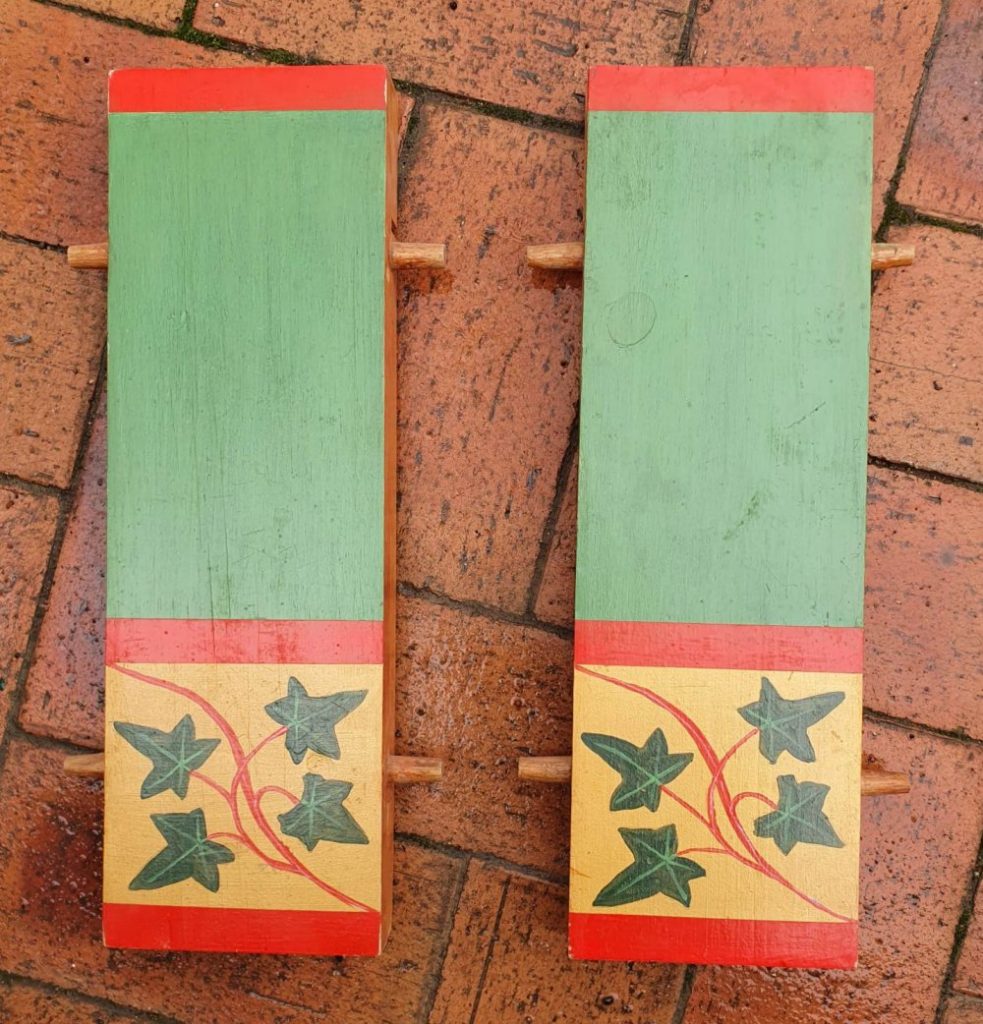
The centres of each table has three barbed quatrefoils to hold scenic miniatures, with no other decoration. The plan was to depict pictures of relevant saints (cooking, tentmaking, music…), but I ran out of time before we wanted to use them, and so they have remained empty.
Since we expected the tables to get heavy use, they are finished with low sheen varnish – makes it easy to remove food, wine and wax.
The hinges in the middle needs support, so each table sits on three trestles. For their first outing, my husband made simple break-down trestles, which we then used for the next 10 years…
The tables can be configured to form a single table 560cm long or (with connection pieces) a rectangular table 180 x 280cm with a slot in the middle for the main poles of our household dining tent.


The tables work really well in our household feasting tent and can seats 20 people in rectangular format, with the single trestle legs on the outside. All our benches and seating chests are built at a standard height, to work well with the tables.
The painted tables are also regularly used as high table, or to hold the dessert course at a feast. They pack easily into the trailer and are easy to store. A piece of wool cloth between the two halves of the table prevents damage to the painting, for storage and transport.
Afterthoughts
These days, I would use egg tempera to paint the table, rather than craft paints. Many years on, the tables are still awaiting their central scenes…
In 2016, we made a couple of smaller unhinged tables, with a simpler version of the same paint scheme. We use these as a sideboard (on taller trestles), or as tables in the tent kitchen.
In 2019, my husband Nico made some new trestles for both large and small tables, with carved fronts.


